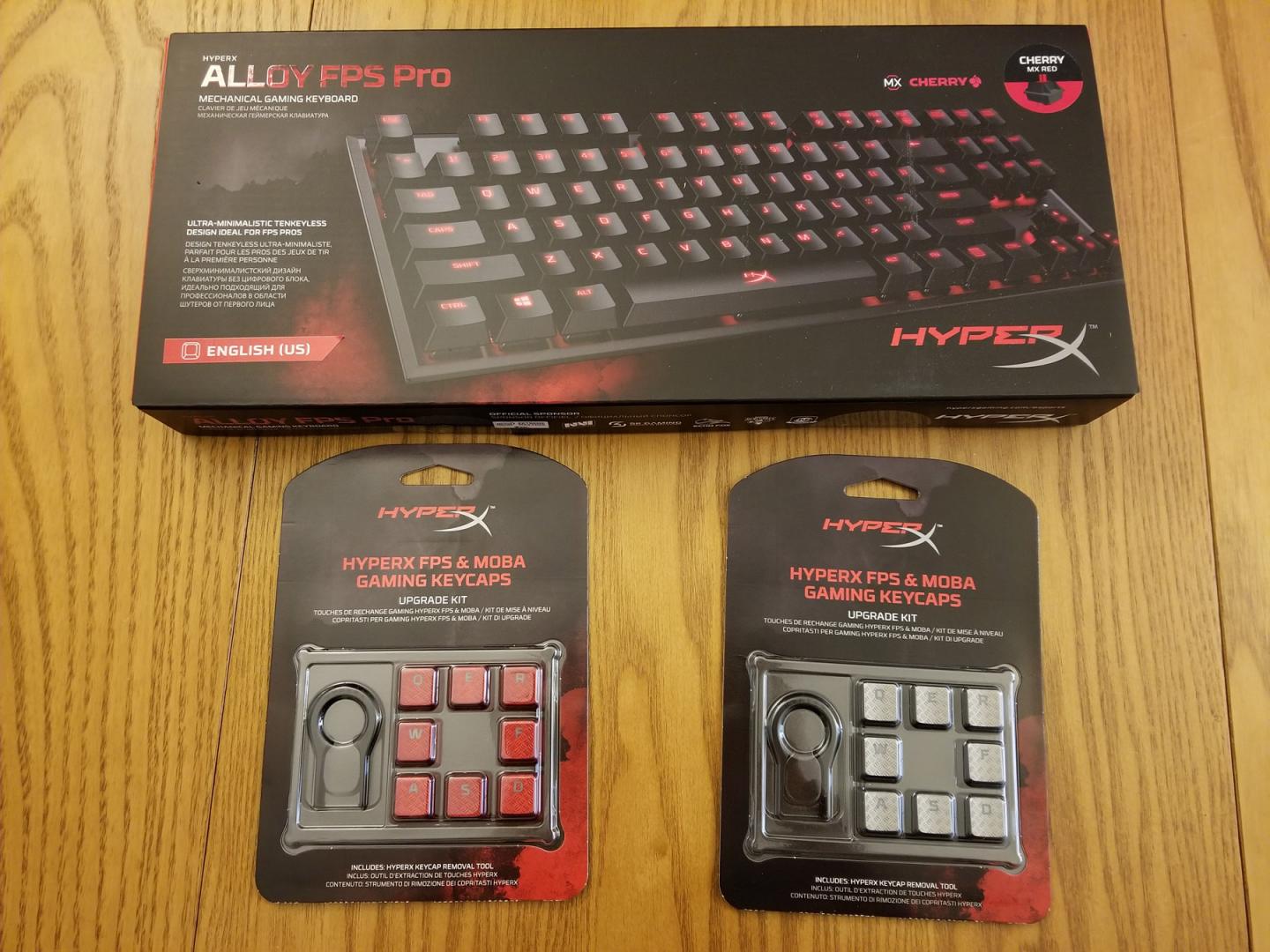As mentioned before, the most noticeable difference between the FPS Pro and the other two Alloys is the lack of Numpad: a trade-off of surface space versus additional keys. As a PC gamer, you probably already know what side of that trade-off you favor, even if you’ve never used a tenkeyless keyboard. It’s no surprise that HyperX named this the “FPS Pro,” since FPS gamers playing low mouse sensitivity highly value having more space for their mouse arm. I found the extra desk space to be quite freeing, though at times I did miss the Numpad for typing out strings of numbers or using the calculator during my non-gaming computer time.

There are several smaller differences as well, though. Both the Alloy and Alloy Elite came with an extra set of textured keycaps for the W, A, S, D, and 1-4 keys. The FPS Pro does not come with these keycaps, though HyperX just started selling packs of textured keycaps for W, A, S, D, Q, E, R, and F keys (the most-used keys for FPS and MOBA style games) with an included keycap removal tool, so you can still get them if they’re desirable to you. Also missing is the soft case for transportation that the Alloy included. There’s no spare USB port on the back of the keyboard like the other Alloys, but as a corresponding trade-off, the FPS Pro only requires one USB port to power. One improvement that the FPS Pro has in common with the Elite is that the keyboard now remembers to keep Gamer Mode on when the computer is restarted. This was one of my small complaints with the Alloy’s Gamer Mode and I’m glad to see it seems to have been consistently addressed in future versions.
Both the Alloy Elite and Alloy FPS Pro take the rock-solid foundation of the Alloy FPS and expand or compact the size of the keyboard respectively. The FPS Pro runs cheaper than the other two Alloys ($80 vs. $100 for the Alloy and $110 for the Alloy Elite), but if you add on a set of keycaps for $15 (which gets you the most parallel experience possible), it’s very closely in-line with the price of the Alloy FPS. The price doesn’t feel unjustified, however, as it’s the same excellent experience of the Alloy with a more compact footprint specifically geared towards people who care about that type of thing. If you’re the type of gamer who wants the most desk surface space possible and won’t miss the Numpad, I heartily recommend the FPS Pro. The Alloy family of keyboards is one that I continue to strongly endorse, and having more variations to fit gamers’ preferences can only be considered a good thing.
